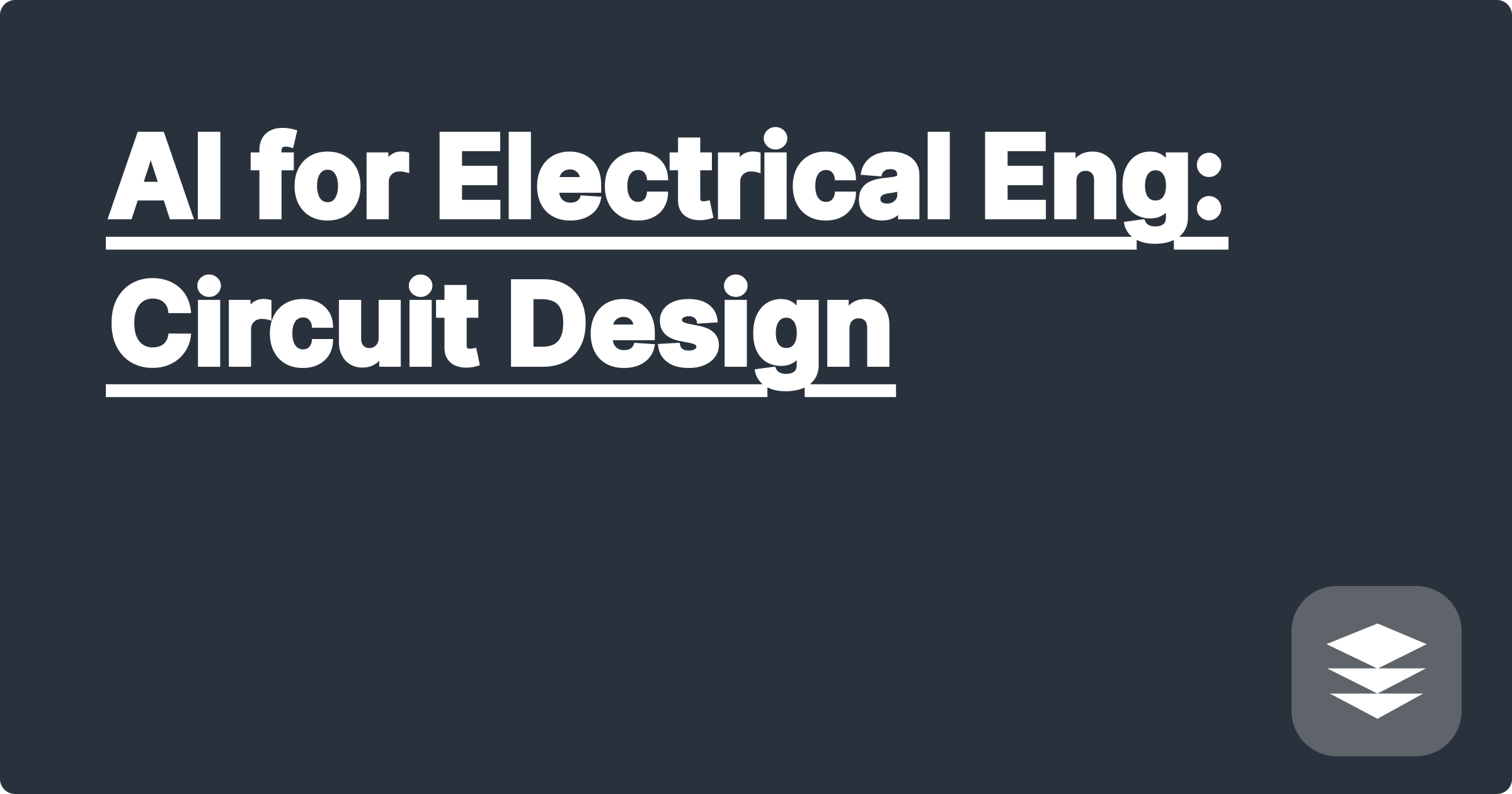
The ever-increasing complexity of electrical circuits presents a significant challenge for STEM students and researchers. Designing, simulating, and optimizing circuits can be a time-consuming and error-prone process, often requiring extensive manual calculations and iterations. Fortunately, the rise of artificial intelligence (AI) offers a powerful new set of tools to address these challenges, promising to revolutionize circuit design and empower the next generation of electrical engineers. From automated component selection to advanced circuit simulation and optimization, AI is poised to become an indispensable partner for electrical engineers.
Imagine having a personalized AI assistant that can help you navigate complex circuit designs, optimize performance, and even generate novel circuit topologies. This is no longer a futuristic fantasy, but a rapidly emerging reality thanks to advancements in AI and machine learning. This blog post will delve into the exciting world of AI-driven circuit design, exploring practical applications, sharing lesser-known AI tools, and providing actionable strategies to enhance your learning and research. We'll focus on how you can leverage these tools to not just survive, but thrive in the demanding world of electrical engineering.
Electrical circuit design is a multifaceted process that involves selecting appropriate components, connecting them in a specific configuration, and verifying the design through simulation and analysis. Traditional methods often rely on manual calculations, look-up tables, and iterative simulations, which can be time-consuming and prone to errors. Furthermore, as circuit complexity increases, the design space expands exponentially, making it increasingly difficult to find optimal solutions manually. This is where AI can make a significant difference. AI algorithms can automate tedious tasks, explore vast design spaces efficiently, and identify optimal solutions that would be difficult or impossible to find using traditional methods.
AI offers a range of tools and techniques to streamline and enhance the circuit design process. AI-powered platforms can automate component selection based on desired specifications, significantly reducing design time. Machine learning algorithms can analyze vast datasets of circuit designs to identify patterns and predict performance characteristics, enabling engineers to optimize their designs for specific criteria. Furthermore, AI can be used to generate novel circuit topologies, exploring design spaces beyond the limitations of human intuition. Tools like ChatGPT and Claude can assist in brainstorming design ideas, generating code for simulations, and even debugging complex circuits. Wolfram Alpha can be invaluable for performing complex calculations, analyzing circuit equations, and providing insights into circuit behavior.
Let's walk through a practical example of using AI in circuit design. Imagine you need to design a low-pass filter with specific cutoff frequency and gain characteristics. First, you can use a tool like ChatGPT or Claude to generate a basic circuit topology based on your requirements. These tools can even suggest specific component values based on their internal knowledge base and available resources. Next, you can use a specialized AI-powered circuit simulator to refine the design, adjusting component values and analyzing the circuit's performance. These simulators can often perform complex simulations much faster than traditional software, allowing you to explore a wider range of design options. Finally, you can use AI-powered optimization algorithms to fine-tune the design, ensuring it meets your exact specifications. This iterative process, guided by AI, can significantly accelerate the design process and lead to more optimized solutions.
Consider the design of a power amplifier for a specific application. Using traditional methods, this might involve numerous calculations and simulations to determine the optimal transistor biasing, load impedance, and feedback network. However, with AI-powered tools, you can input the desired output power, frequency range, and efficiency requirements, and the AI algorithm can automatically generate a suitable circuit design. Similarly, AI can be used to design complex analog filters, digital signal processing systems, and even integrated circuits. Imagine using an AI tool to generate the Verilog code for a complex digital circuit, saving you hours of tedious coding and debugging. These are just a few examples of how AI is transforming the landscape of electrical engineering.
Leveraging AI effectively in your academic journey requires a strategic approach. Start by identifying your specific needs and challenges. Are you struggling with complex circuit analysis? Do you spend too much time on manual calculations? Once you've identified your pain points, you can start exploring AI tools that can address these challenges. Don't be afraid to experiment with different tools and techniques to find what works best for you. GPAI (Generalized Personal AI Partner), a concept encompassing personalized AI assistants, can be invaluable in organizing your learning, managing your time, and providing personalized feedback. Imagine using GPAI to create a study schedule optimized for your learning style, or to generate practice problems tailored to your specific weaknesses.
Beyond the well-known tools like ChatGPT, explore lesser-known but powerful AI platforms. For instance, there are AI tools specifically designed for solving complex mathematical equations, analyzing circuit simulations, and even generating circuit layouts. These niche tools can often provide a significant advantage in your studies and research. Share your experiences with your peers and learn from their successes and challenges. By embracing AI and integrating it into your workflow, you can significantly enhance your academic performance and prepare yourself for a successful career in electrical engineering.
Finally, remember that AI is a tool, not a replacement for fundamental understanding. While AI can automate many tasks, it's crucial to develop a strong foundation in circuit theory and design principles. Use AI to augment your learning, not to replace it. By combining your knowledge with the power of AI, you can unlock your full potential and become a true innovator in the field of electrical engineering. Start exploring these tools today and discover how AI can empower you to achieve your academic and professional goals.
AI for Differential Equations: Solve Problems
AI for Earth Science: Explore Data
AI for Aerospace Eng: Flight Sim
AI for Physics Labs: Data Analysis
AI for Genetics: Understand DNA
AI for Electrical Eng: Circuit Design
AI for Biochemistry: Enzyme Kinetics
AI for Math: Conquer Complex Problems